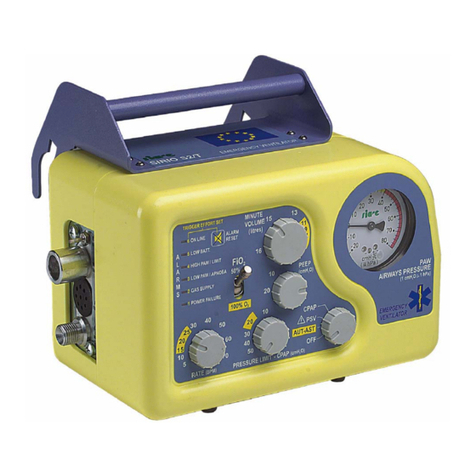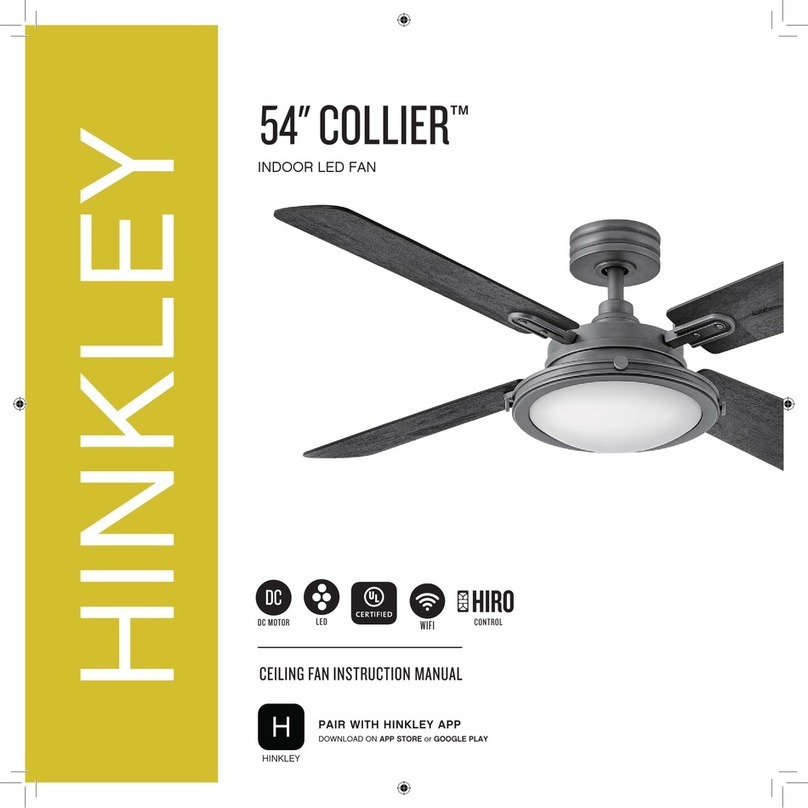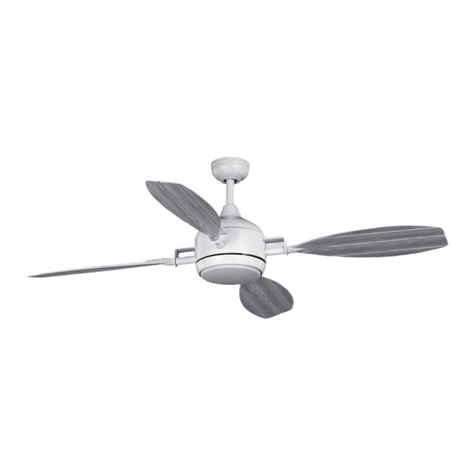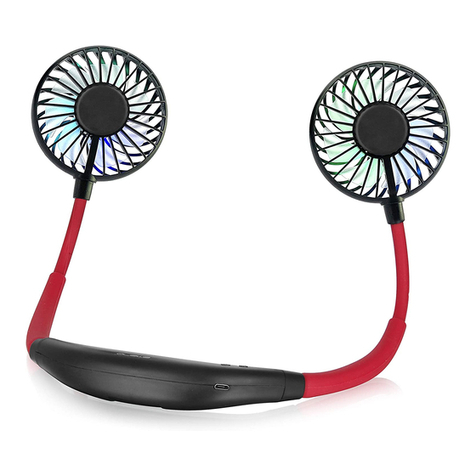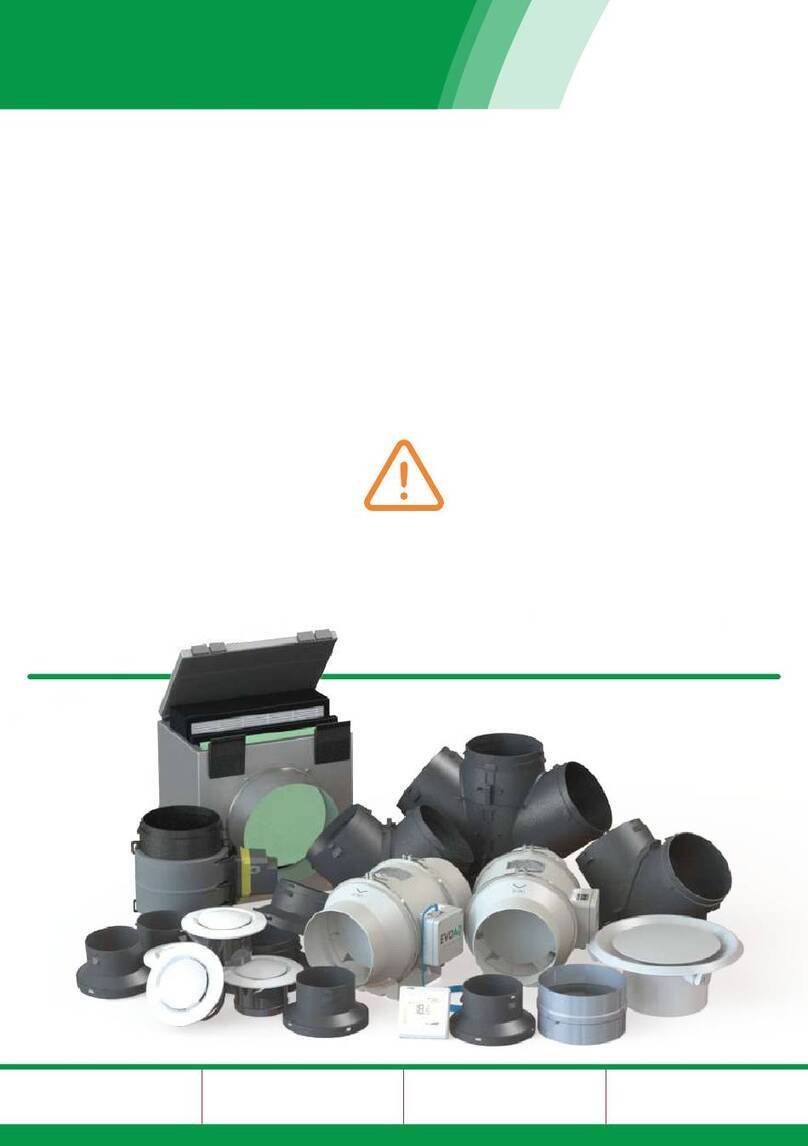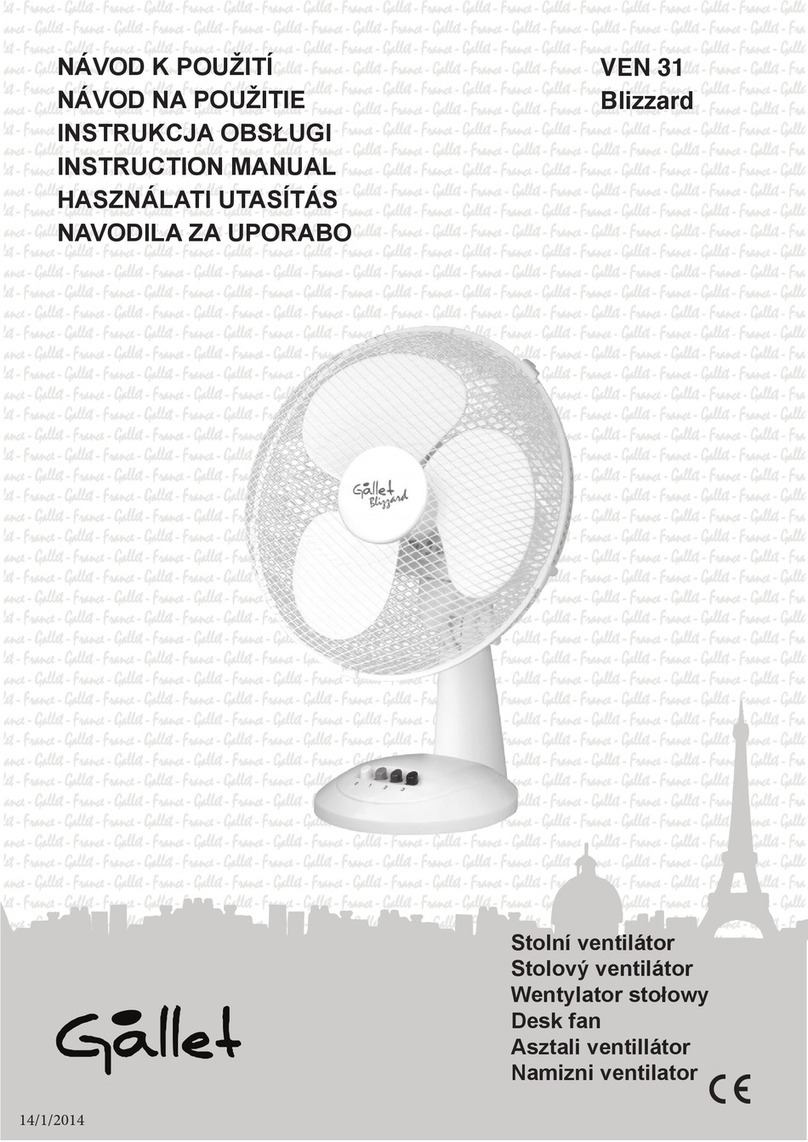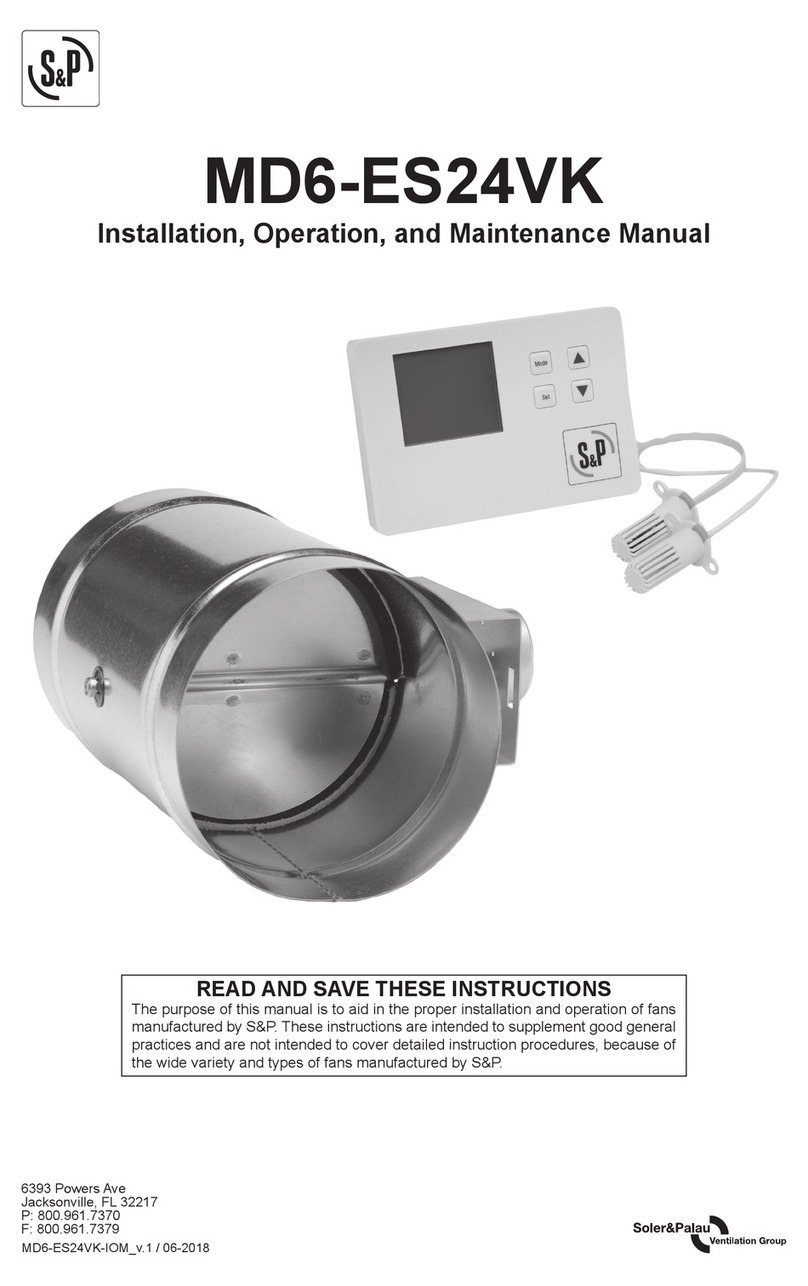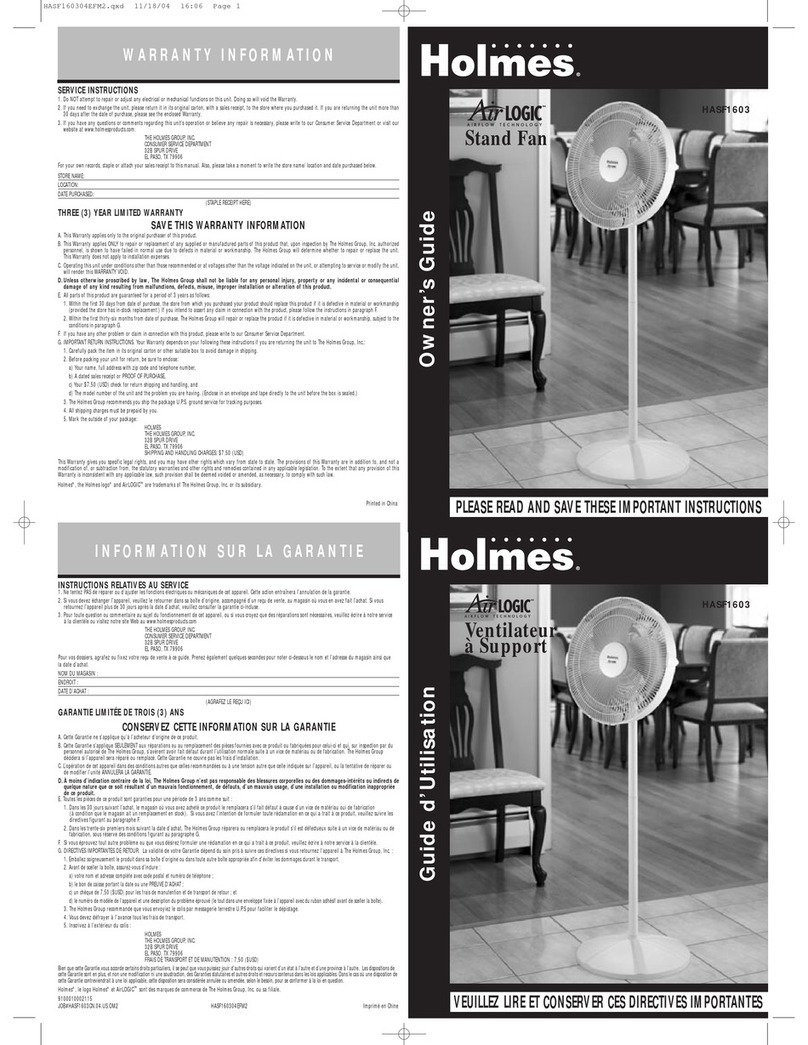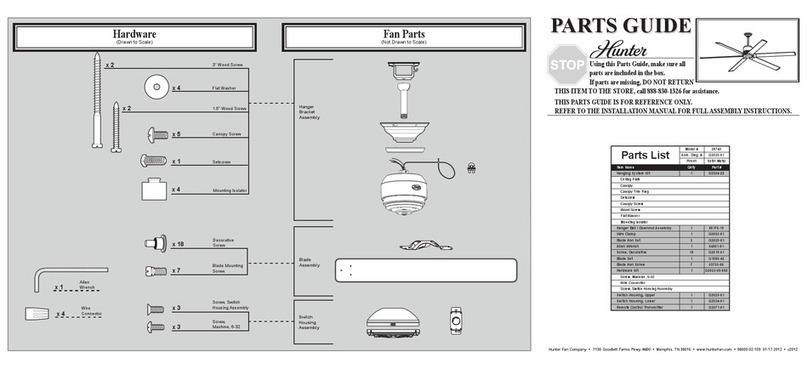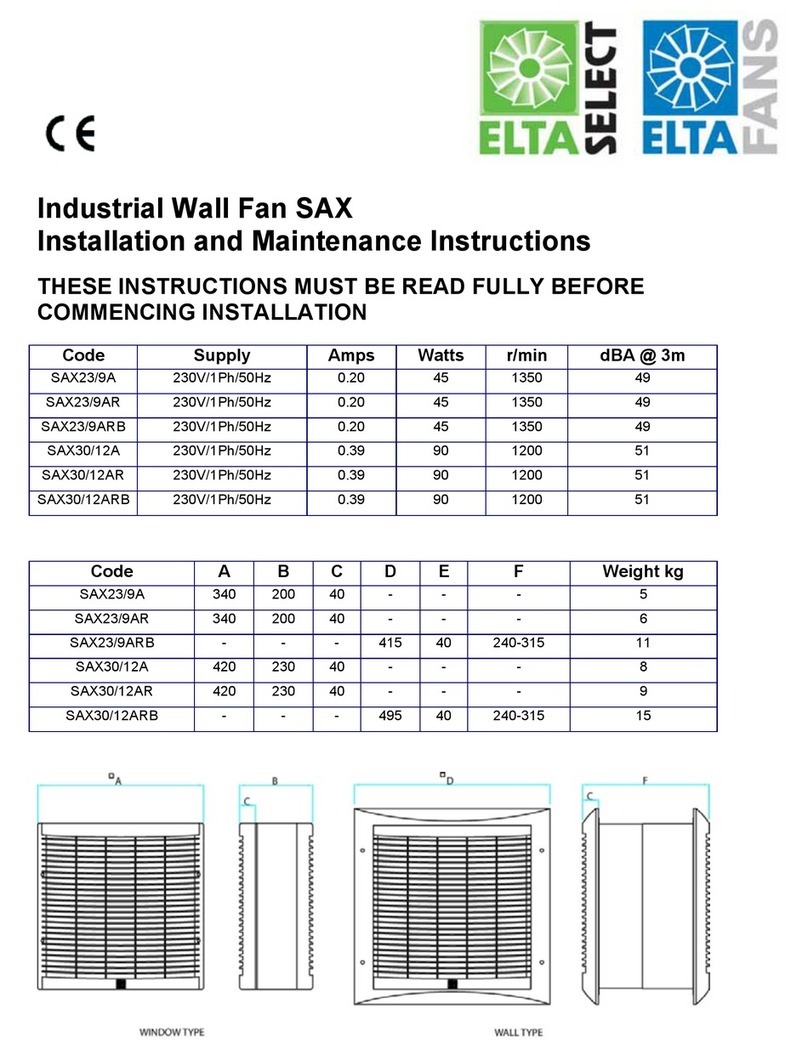Siare Siaretron 4000 User manual

Siaretron 4000
ICU Ventilator
User’s Manual


Siaretron4000eIII
GENERAL INFORMATION
The information contained in this manual are the exclusive property of
SIARE Engineering International Group s.r.l. and may not be reproduced in
any way without authorisation. SIARE Engineering International Group s.r.l.
reserves the right to modify or replace this manual at any time without prior
notice.
It is however recommended that you make sure you have the most recent
version of the manual. In the event of doubt, contact SIARE Engineering
International Group s.r.l. (see the address on page IX). The information
contained in the present User’s Manual can be considered correct, but do
not exclude professional knowledge by the user.
The operation and maintenance of Siaretron 4000 lung ventilator must be
entrusted to qualified technical personnel only. The responsibility of SIARE
Engineering International Group s.r.l. concerning the Siaretron 4000 lung
ventilator and its use is limited to what is indicated in the guarantee supplied.
The contents of this manual do not in any way limit the right of SIARE
Engineering International Group s.r.l. to revise, change or modify without
prior notice the equipment (including the relative software) described herein.
Unless otherwise specifically agreed in writing, SIARE Engineering
International Group s.r.l. is not obliged to supply such revisions, changes or
modifications to the owner or user of the equipment (including the relative
software) described herein.
The information contained in this manual refers to the versions of Siaretron
4000 lung ventilator produced or updated after April 2019. It is possible that
some information may not apply to previous versions. Contact SIARE
Engineering International Group s.r.l. if you have any doubts.
User’s Manual, version DU3065104
Revision 4 - 18.04.2019

IV User manual, DU3065104
Observations
SIARE Engineering International Group s.r.l.
wishes to thank you for
purchasing one of its products.
Any comment on the accuracy and usefulness of this User’s Manual would
be very helpful in allowing us to guarantee current and f
uture users of the
high quality level of our manuals. We would be grateful if you would send
us your comments (see address at page IX).
The SIARE trademark is used throughout this manual as an abbreviation
for the manufacturer: SIARE Engineering International Group s.r.l.
Directive 93/42 EEC
Definitions
Three symbols are used in this User’s Manual to indicate particularly
important information.
WARNING!!
This indicates a condition of danger for the patient or for the
operator.
CAUTION
This indicates the possibility of danger to the ventilator.
NOTE
This indicates information worthy of note, making the
operation of the Siaretron 4000 lung ventilator
more efficient
or practical.

Siaretron4000eV
Warnings, cautions and notes
You are advi
sed to carefully read the information given alongside the three
symbols shown on the previous page, since it contains considerations on
the safety, the special requirements for the use Siaretron 4000
lung ventilator
(hereinafter called lung ventilator) and the relative safety regulations.
•In order to understand how the lung ventilator
works and how to use it
correctly to ensure patient and user safety, the recommendations and
instructions contained in this manual must be read with care and
understood.
•In or
der to grant maximum reliability and to ensure the patient and
operator’s safety, the lung ventilator
was designed and manufactured
following warranty standards of quality of the product and its
components. Any part of circuit must therefore only be replac
ed with
original spare parts supplied or checked by SIARE.
•The lung ventilator
must only be used for the purposes specified herein
and the safety of the lung ventilator
is therefore only guaranteed if it is
used in accordance with the instructions given in this manual.
•The lung ventilator
must only be used by qualified personnel and only in
equipped and dedicated rooms, according to the regulations in force in
the country where the lung ventilator
is installed. Furthermore, during all
the operation of lung ventilator
, it is required the presence of qualified
personnel.
•Regarding the general safety and
to ensure correct technical assistance
and avoid possible physical damage to the patient, the maintenance
schedule foreseen in this manual must be respected; q
ualified personnel
must only carry out maintenance of the lung ventilator
or authorised
modifications to the lung ventilator
. The user of this product is solely
responsible for any operating defect caused by improper use or
interventions carried out by thi
rd parties other than specialised SIARE
personnel.
•
The maintenance and the replacement of any part have to be performed
by authorized service personnel and only original SIARE spare parts or
components checked by SIARE should be used.
•Regarding the general safety of the electro-
medical equipment, it is
important to follow all rules about the interaction between the machine
and the patient, the operator and the nearby environment.
•For any repairs to lung ventilator
(due to malfunctioning, defects or
failures
), the user must contact SIARE or the authorised local Technical
Service Centre; it is advisable to specify the data on the identification
label (model, serial number, ……) when requesting intervention.

VI User manual, DU3065104
•SIARE recommends establishing a maintenance and serv
ice contract
with SIARE or the local authorised service dealer in order to guarantee
the scheduled maintenance required to operate the lung ventilator
in a
safe and correct manner.
•To prevent the risk of fire, keep the lung ventilator
and/or the oxygen
tub
es away from matches, lit cigarettes and inflammable material, such
as anaesthetic gases and/or sources of heat.
•Do not connect the lung ventilator
to the patient by flexible connectors,
and antistatic or conductive tubes to prevent patient burnings during the
use of high frequency surgical equipment, specially dangerous with
antistatic tubes. The use of flexible connectors, antistatic or conductive
tube is never permitted with lung ventilator.
•
Do not use worn and consumed tubes or tubes contaminated by
fla
mmable substances like grease or oil to deliver oxygen; (fabrics, oil
and other fuels can easy ignite and they intensively burn in air with high
concentration of oxygen.
•In the event of fire or an unpleasant smell (e.g. a smell of burning), the
lung ventilator
should immediately be disconnected from the electrical
power supply and from the battery (if fitted).
•When coming into contact with any component of the lung ventilator
, the
hospital procedures for the handling of infected material should always
be respected.
•
SIARE is aware that cleaning, sterilisation and disinfection procedures
vary considerably from one health structure to another. SIARE cannot be
held responsible for the efficacy of the cleaning and sterilisation
procedures, nor for the other proc
edures carried out while the patient is
being treated. As regards cleaning, sterilisation and disinfection of the
product components, it is therefore recommended that the regulations
currently in force in the country where the lung ventilator is installed be
taken into consideration.
•The lung ventilator
was not designed as a total monitoring device: some
conditions of danger for the patients treated with vital support equipment
will not trigger any alarm.
•Before using the lung ventilator or any connected co
mponent, carefully
check that the lung ventilator
is functioning correctly; when needed, the
preliminary tests must be performed as described in the present manual.
•
Do not use pointed instruments, such as pencils, screwdrivers or the like
to make selections or settings as they could damage the surface of the
LCD panel.

Siaretron4000eVII
•Check the lung ventilator
periodically as described in the relative
“Maintenance” chapter and do not use it if it is faulty or malfunctioning.
Replace any broken, missing, obviously worn,
deformed or
contaminated parts immediately, with spare parts supplied by SIARE.
•
Do not connect external devices NOT manufactured or NOT authorized
by SIARE to the lung ventilator (example
: scavenging systems, patient
simulators, etc…..), and not described
in the present user’s manual: in
case of need contact SIARE.
•The correct functioning of the lung ventilator
can be impaired if original
SIARE spare parts and accessories are not used; the use of other
accessories is however allowed only if formally author
ised by SIARE
in accordance with current safety regulations.
•SIARE assumes all foreseen legal liability if the lung ventilator
is used
and periodically maintained according to the instructions contained in
this manual: the Technical Assistance Report, draw
n up and signed by
the authorised SIARE technician, is proof of the completion of the
scheduled maintenance.
•Notwithstanding the lung ventilator
is equipped with a safety valve which
allows to the patient to breathe spontaneously the ambient air even in
ca
se of gas supply failure, the auxiliary ventilation system must be
always promptly available; such a component is part of SIARE
Engineering International Group s.r.l. products range.

VIII User manual, DU3065104
WARNING !!
•The lung ventilator is not approved for operation in
places where there is any risk of explosion.
•Do not use the lung ventilator in the presence of
flammable gases.
WARNING !!
The lung ventilator cannot be used in the presence of
explosive gases.
WARNING !!
Before starting the lung ventilator use, you have to carry
out the preliminary checks.
WARNING !!
Before connecting the lung ventilator to other electrical
equipment not described in this manual, a request for
authorisation should be sent to Siare.
WARNING !!
Qualified staff must make the regulation of ventilation
parameters.
WARNING !!
An auxiliary ventilation system is suggested for the patients
for which the lung ventilator represents a life support.
WARNING !!
Means for independent ventilation shall be available (i.e.
manual resuscitation bag with mask) whenever the lung
ventilator is in use.

Siaretron4000eIX
SIARE declines all civil and penal responsibility in the
following cases:
•If the lung ventilator is used in conditions and for
purposes not stated or described in this manual.
•If the lung ventilator is used by non-qualified personnel.
•If periodic maintenance as foreseen by this manual has
not been carried out correctly or has been skipped.
•If personnel not officially authorised by SIARE have
performed maintenance.
•If non-original SIARE spare parts or components not
checked by SIARE have been used.
•If the lung ventilator has been connected to equipment not
complying with the safety norms for the intended use.
•Direct or indirect damage to persons or things caused by
unauthorised technical intervention or by improper use of
the lung ventilator not in accordance with the instructions
contained in the users and maintenance manual.
Year of manufacture
Check the identification data label of the Siaretron 4000 lung ventilator in the
relative chapter.
Shelf life of medical device
The Directive 93/42/EEC on medical devices foresees that the manufacturer
defines the shelf life of the device according to the intended purpose. The
shelf life foreseen by SIARE for the lung ventilator model Siaretron 4000 is
10 years.
Manufacturer
SIARE Engineering International Group s.r.l.
Via Giulio Pastore, 18 - 40056
Località Crespellano, 40053 Valsamoggia (BO), ITALY
Tel.: +39 051 969802 - Fax: +39 051 969366
E-mail: mail@siare.it - web: www.siare.it

XUser manual, DU3065104
Electromagnetic Compatibility
The Siaretron 4000 lung ventilator is designed to operate in the specified
electromagnetic environment (see warning below).
The customer or the user of Siaretron 4000 lung ventilator should ensure that
it is used in such an electromagnetic environment.
The lung ventilator complies with the EN 60601-1-2
regulations on Electromagnetic Compatibility of electro-
medical equipment. It is in any case highly recommended
not to use the lung ventilator adjacent to high-powered
equipment or to units, which emit strong electro-magnetic
fields. Mobile phones, cordless phones or other radio
transmitters used in the vicinity of the lung ventilator could
influence its operation. Whenever the lung ventilator should
be necessarily used nearby to such equipment, it will be
required to supervise its normal operation.
In general, as regards the regulations regarding
“electromagnetic emissions”, “electromagnetic immunity”
and “recommended separation distances between portable
and mobile RF equipment and the device”, always refer to
what is described in the lung ventilator manual.
Requirements applicable to cables, transducers and other
accessories that could affect compliance with the
requirements of 6.1 and 6.2.

Siaretron4000eXI
Table of contents
GENERAL INFORMATION ..............................................................................................III
Observations...................................................................................................................................IV
Definitions .......................................................................................................................................IV
Warnings, cautions and notes..........................................................................................................V
Year of manufacture .......................................................................................................................IX
Shelf life of medical device .............................................................................................................IX
Manufacturer...................................................................................................................................IX
Electromagnetic Compatibility..........................................................................................................X
Table of contents.............................................................................................................................XI
1 INTRODUCTION .................................................................................................... 1-1
1.1 Presentation........................................................................................................................1-1
1.1.1 Main technical characteristics ................................................................................................1-2
1.1.2 Foreseen use.........................................................................................................................1-2
1.2 Correct operation................................................................................................................1-3
1.3 Norms and standards regulations.......................................................................................1-5
2 DESCRIPTION ....................................................................................................... 2-1
2.1 Overall view ........................................................................................................................2-2
2.2 Front view ...........................................................................................................................2-4
2.3 Lung ventilator front view....................................................................................................2-5
2.3.1 Electric connections side........................................................................................................2-7
2.3.2 Gas supply side......................................................................................................................2-9
2.4 12’’ LED display................................................................................................................2-10
2.4.1 Keyboard with soft key and encoder knob............................................................................2-11
2.4.2 Control keyboard description................................................................................................2-11
2.4.3 Operative mode....................................................................................................................2-13
2.4.4 Alarm signal visualization.....................................................................................................2-15
2.4.5 Monitoring of ventilatory parameters....................................................................................2-16
2.4.6 Curves, additional breathing parameters and loop...............................................................2-18
2.4.7 Additional breathing parameters ..........................................................................................2-19
2.4.8 Loop display area: lungs icon...............................................................................................2-20
2.4.9 Graphic setting, operative functions and general informations.............................................2-21
2.5 Rear view..........................................................................................................................2-25
2.6 MENU ...............................................................................................................................2-26
2.7 Product identification label................................................................................................2-28

XII User manual, DU3065104
3 PREPARATION TO USE........................................................................................ 3-1
3.1 Notes...................................................................................................................................3-3
3.2 Before the use ....................................................................................................................3-5
3.2.1 Assembling of O2 cell.............................................................................................................3-5
3.2.2 Battery charger.......................................................................................................................3-6
3.3 Preparation to use ..............................................................................................................3-8
3.3.1 Medical gas connection..........................................................................................................3-8
3.3.2 Connection of medical gas supply from cylinder....................................................................3-9
3.3.3 Mains power supply..............................................................................................................3-10
3.3.4 External 12Vdc power supply...............................................................................................3-13
3.3.5 Protection fuses ...................................................................................................................3-14
3.3.6 Patient circuit supporting arm...............................................................................................3-15
3.3.7 Patient circuit connections....................................................................................................3-15
3.3.8 Use of antibacterial filter.......................................................................................................3-16
3.3.9 Gas analyzer connection ( Gas Sensor )..............................................................................3-17
3.3.10 Data connection (Trend and Events downloading )..............................................................3-18
3.3.11 Nebulizer connection............................................................................................................3-19
3.3.12 Humidifier connection...........................................................................................................3-19
3.3.13 Connection to other equipments ..........................................................................................3-21
3.4 List of predisposition sequence for use............................................................................3-22
3.5 Use....................................................................................................................................3-23
3.5.1 Preliminary tests...................................................................................................................3-23
3.5.2 Ventilator switch-ON / “ SELF TEST “ phase .......................................................................3-25
3.6 Turn the lung ventilator OFF.............................................................................................3-29
3.7 Preliminary checks - Introduction......................................................................................3-30
3.7.1 Preliminary checks - TESTS ON DEMAND..........................................................................3-30
3.7.2 O2 Sensor calibration...........................................................................................................3-32
3.7.3 Leak Test .............................................................................................................................3-35
3.7.4 LEAK TEST not overcome...................................................................................................3-36
3.7.5 Exit from TESTS ON DEMAND............................................................................................3-38
3.7.6 Preliminary checks - Lung Ventilator....................................................................................3-39
3.7.7 Preliminary checks - Parameters monitoring........................................................................3-41
3.7.8 Preliminary checks - Alarms.................................................................................................3-42
3.7.9 Alarms check........................................................................................................................3-44
3.7.10 Conclusions..........................................................................................................................3-46
3.8 Preliminary checks sequence list .....................................................................................3-47
3.9 “ TESTS ON DEMAND “...................................................................................................3-48
3.9.1 Respiratory flow sensors calibration.....................................................................................3-50
3.9.2 O2 sensor calibration ...........................................................................................................3-52
3.9.3 Leak Test .............................................................................................................................3-52
3.9.4 Gas Sensor - Zero Calibration..............................................................................................3-53
3.9.5 Exit from TESTS ON DEMAND............................................................................................3-55

Siaretron4000eXIII
4 LUNG VENTILATOR USE...................................................................................... 4-1
4.1 General warnings................................................................................................................4-3
4.2 STAND-BY mode................................................................................................................4-4
4.2.1 “ SELF TEST “ phase.............................................................................................................4-4
4.2.2 Keyboard with soft key and encoder knob use.......................................................................4-6
4.3 Choice of the patient type...................................................................................................4-7
4.4 Setting up the MENU language..........................................................................................4-9
4.4.1 SETUP screen parameters editing procedure......................................................................4-10
4.5 Setting the PATIENT DATA..............................................................................................4-11
4.5.1 Procedure for setting the PATIENT DATA ...........................................................................4-12
4.6 Erasing the PATIENT DATA.............................................................................................4-14
4.7 Setting up the ALARMS....................................................................................................4-15
4.8 Operating modes and PRP parameters ...........................................................................4-16
4.8.1 Operating mode and PRP parameters editing procedure.....................................................4-16
4.8.2 NIV APCV ( APCV ) .............................................................................................................4-17
4.8.3 APCV-TV..............................................................................................................................4-19
4.8.4 NIV PSV ( PSV ) ..................................................................................................................4-21
4.8.5 PSV-TV ................................................................................................................................4-23
4.8.6 VC-VAC................................................................................................................................4-25
4.8.7 VC-VAC BABY.....................................................................................................................4-27
4.8.8 V-SIMV.................................................................................................................................4-29
4.8.9 P-SIMV.................................................................................................................................4-31
4.8.10 CPAP ...................................................................................................................................4-33
4.8.11 APRV (Airway Pressure Release Ventilation)......................................................................4-34
4.8.12 MAN operating mode ...........................................................................................................4-35
4.8.13 APNEA BACK-UP................................................................................................................4-36
4.8.14 Physiological respiratory parameters ( PRP ).......................................................................4-37
4.8.15 Additional respiratory parameters ........................................................................................4-40
4.9 Ventilation phase ..............................................................................................................4-43
4.9.1 Ventilation interruption..........................................................................................................4-44
4.10 Graphical settings and operating functions ......................................................................4-45
4.11 MAIN MENU .....................................................................................................................4-50
4.11.1 MAIN MENU - SETUP..........................................................................................................4-50
4.11.2 MAIN MENU - ALARMS.......................................................................................................4-50
4.11.3 MAIN MENU - TRENDS.......................................................................................................4-51
4.11.4 MAIN MENU - EVENTS.......................................................................................................4-54
4.11.5 MAIN MENU - PATIENT DATA............................................................................................4-56
4.11.6 MAIN MENU - PATIENT DATA ERASE...............................................................................4-56
4.11.7 MAIN MENU - DEFAULT PARAMETERS............................................................................4-56
4.11.8 MAIN MENU – CLOSE.........................................................................................................4-57
4.12 MAIN MENU - SETUP......................................................................................................4-58
4.12.1 SETUP options in MAIN MENU ...........................................................................................4-59
4.12.2 List of default parameters.....................................................................................................4-63

XIV User manual, DU3065104
4.13 CALIBRATRION PROGRAMS.........................................................................................4-64
4.13.1 Preliminary...........................................................................................................................4-64
4.13.2 “ CALIBRATRION PROGRAMS “ displaying........................................................................4-65
4.13.3 Expiratory flow sensors calibration.......................................................................................4-66
4.13.4 VTEc ( ON – OFF )...............................................................................................................4-68
4.13.5 IRMA / ISA - Trend and Events............................................................................................4-69
4.13.6 Exit.......................................................................................................................................4-70
5 ALARMS ................................................................................................................ 5-1
5.1 Introduction.........................................................................................................................5-2
5.2 Displaying and used symbols.............................................................................................5-3
5.2.1 Alarms display area................................................................................................................5-3
5.2.2 A1 - Alarm area......................................................................................................................5-4
5.2.3 A2 - ALARMS parameter, MAIN MENU.................................................................................5-6
5.2.4 A3 - General information area................................................................................................5-7
5.2.5 A4 - Acoustic alarm silencing.................................................................................................5-8
5.3 Alarms setting.....................................................................................................................5-9
5.3.1 Setting of ALARMS limits values............................................................................................5-9
5.3.2 Setting of ALARMS volume..................................................................................................5-11
5.3.3 Setting of DEFAULT values .................................................................................................5-13
5.3.4 Alarms DEFAULT values .....................................................................................................5-14
5.4 Troubleshooting................................................................................................................5-15
5.4.1 Troubleshooting list..............................................................................................................5-15
6 MAINTENANCE ..................................................................................................... 6-1
6.1 Notes...................................................................................................................................6-2
6.2 Cleaning, disinfection and sterilization ...............................................................................6-3
6.3 General indications ..........................................................................................................................6-4
6.3.1 Cleaning.................................................................................................................................6-4
6.3.2 Disinfection and sterilization...................................................................................................6-4
6.3.3 Disinfection by immersion (chemical).....................................................................................6-5
6.4 Cleaning, disinfection and sterilization table....................................................................................6-6
6.4.1 Sterilization of EXP V. Monoblock ( exhalation block with flow sensor ) ................................6-9
6.4.2 Disposable bacteria filter......................................................................................................6-10
6.5 Periodic maintenance.....................................................................................................................6-11
6.5.1 Maintenance operations.......................................................................................................6-11
6.5.2 Cleaning, disinfection and sterilization before use with another patient...............................6-13
6.6 Repairs and spare parts.................................................................................................................6-13
6.6.1 Spare parts kit for lung ventilator..........................................................................................6-13
6.7 Miscellaneous...............................................................................................................................6-14
6.7.1 Storage.................................................................................................................................6-14
6.7.2 Repackaging and shipment..................................................................................................6-14
6.7.3 Disposal ...............................................................................................................................6-14

Siaretron4000eXV
A APPENDIX .............................................................................................................A-1
A.1 Technical sheet...................................................................................................................A-2
A.1.1 Siaretron 4000 - Ventilator for Intensive Care - code 960401 ............................................... A-2
A.2 Preliminary checks............................................................................................................A-11
A.3 Table for Identification of medical gas hose colours ........................................................A-13
A.4 Glossary............................................................................................................................A-14
A.5 Electromagnetic compatibility tables ................................................................................A-18
A.5.1 Annex A-Table 1................................................................................................................ A-18
A.5.2 Annex B-Table 2................................................................................................................ A-19
A.5.3 Annex C - Table 3 ............................................................................................................... A-20
A.5.4 Annex E-Table 5................................................................................................................ A-21

XVI User manual, DU3065104
This page has been added to make front / back copy easier.

Siaretron4000e 1-1
1 INTRODUCTION
SIARE Engineering International Group s.r.l. is glad to introduce this new product, result of
40 years of experience and investment in technological innovation that we are
implementing in recent years.
SIARE Engineering International Group s.r.l. has focused heavily on innovation of
materials, ergonomics and ease of use of its equipment.
All routine operations have been simplified and the operational procedures are “foolproof”,
in this way there is no margin for the user to make incorrect or inadequate manoeuvres.
Even the maintenance procedures have been simplified and the parts subject to wear or
deterioration have substantially decreased.
The new Siaretron 4000 intensive care lung ventilator is considerably different from all other
previously manufactured versions of Siare intensive care lung ventilators.
1.1 Presentation
The Siaretron 4000 intensive care lung ventilator (hereinafter called lung ventilator) is a new
generation equipment, designed for the treatment of acute and sub acute diseases and can
be used on Adults, Paediatric and Neonatal (optional) patients.
The lung ventilator provides new advanced features for operative modes management; it is
equipped with different ventilation functions and thanks to its keyboard and decoder knob
the user’s selection of most suitable settings are simplified.
For those who have a basic knowledge on how lung ventilators for intensive care work, the
use of this equipment is intuitive and a brief training course on regard would be enough.
The user’s interface (GUI) includes the keyboard, the decoder knob and the screen; the last
one displays the lung ventilators settings and measured data, as well as various functions,
allowing the operator an immediate evaluation of the patient conditions; moreover, it is
possible to select and display the temporal trends of the pressure, flow, volume, the loops
of flow/volume, pressure/volume.
An immediate information management system, allows the clinician to set the alarms,
collect data concerning the trend of the operating parameters (TREND) and the lung
ventilator EVENTS log using the MENU.
The same system allows the operator to set the PATIENT TYPE (Neonatal, Paediatric,
Adults), load or erase the PATIENT DATA and in case of needs, load automatically the
DEFAULT PARAMETERS of the lung ventilator.

1-2 User manual, DU3065104
1.1.1 Main technical characteristics
The Siaretron 4000 lung ventilator is composed of two main blocks: the trolley and the lung
ventilator block. The trolley, if required, can be equipped with a built-in medical air
compressor.
In turn, the ventilator block is divided in two parts: the upper part that includes a 12” TFT
colour monitor, the board for the elaboration of all data and information (CPU) that
supervises the operation and display of patient parameters. To manage the pneumatic part,
the CPU board uses serial transmission system by bus, type Controller Area Network (also
known as CAN-BUS) that allows it to check and communicate with the electronic boards
peripherals.
The CAN communication system was expressly designed to operate without any problem
also in environments highly disturbed by the presence of electromagnetic waves. The EMC
immunity level is further increased by using twisted pair type connection cables.
The lower part of the ventilator block includes the pneumatic control and all the fittings or
connections, both electrical and pneumatic, to the outside. In this area are also mounted
the back-up batteries for use in case of power supply absence and the board for battery
charge management.
The Siaretron 4000 foresees the possibility to upgrade the software for implementing
advanced ventilation modalities and functionalities.
The ventilator block can be used as a stand-alone part being separable from the trolley, by
positioning it on a flat surface. Obviously this operation can be done only in case the
medical air compressor is not provided within the trolley.
1.1.2 Foreseen use
The Siaretron 4000 system delivers controlled or spontaneous ventilations with a re-
adjustable level of end expiration positive pressure (PEEP), of the trigger sensitivity and
oxygen concentration.
Adult, paediatric and neonatal (optional) ventilation are available, thanks to an adjustable
minimum Tidal Volume from 20 ml to 3000 ml. (from 2 ml to 100 ml : optional). After the
switching-on of the lung ventilator it is possible to choice the patient type (Adult, Paediatric
or Neonatal) setting the relevant default parameters.
The lung ventilator is equipped with a flow and pressure trigger, also it includes the most
modern ventilation modes: volume controlled ventilation modalities VC/VAC, VC/VAC-
BABY, pressure controlled ventilation modalities APCV (BILEVEL ST), APCV-TV, SIMV by
Volume and by Pressure, Pressure supported modalities PSV (BILEVEL S), PSV-TV,
CPAP, APRV, SIGH, Non Invasive Ventilation (NIV APCV - NIV PSV), Drug Nebulizer
(NEB.) and Manual Ventilation (MAN).
In spontaneous ventilation mode, it ensures inspiratory flow up to 240 l/min, both with
control and support pressure.
The medical air compressor (optional) supplies compressed air to the ventilator block and it
can be used in spite of medical air distribution system or from cylinder.

Siaretron4000e 1-3
The battery, in perfect conditions and fully charged, allows the lung ventilator to operate for
at least 90 minutes (without compressor and/or humidifier), allowing to power the lung
ventilator in case of transport within hospital facilities.
It is possible to reach an autonomy of about 3 hours by the aid of an auxiliary external
battery (or battery pack).
The present manual explains how to use the Siaretron 4000 lung
ventilator system and how performing some simple maintenance
procedures.
SIARE recommends to read carefully the present manual and its
relevant instructions before using the lung ventilator or proceeding to
maintenance.
WARNING !!
Please read the recommendations and the instructions herein in order to
ensure a correct and safe use of Siaretron 4000 both for the clinician and
for the patient.
Siaretron 4000 must be used only for the purposes mentioned below
and in the manner described herein, therefore the clinician must
thoroughly follow these instructions for use.
1.2 Correct operation
For correct and complete operation, the lung ventilator must be:
•connected to the oxygen outlets of the medical gas distribution system or of the
cylinders; the air can also be supplied by a medical air compressor (optional);
•correctly connected to the patient circuit;
•connected to a mains power supply with the same voltage as specified on the
identification plate (or supplied by internal battery);
•correctly connected to all accessories and equipment necessary for the operation of
the lung ventilator.
The connection with main power supply, as well as connections with
medical gas distribution system, must be effected according to the
indications contained in the present user’s manual (see chapter 2).

1-4 User manual, DU3065104
The lung ventilator incorporate a series of sensors for continuous patient monitoring, the
most important of which are:
•the flow sensors on the expiratory (external) / inspiratory lines (internal), are used to
measure the expiratory / inspiratory volumes of the patient;
•the pressure sensors (internal), used to control the pressure of the airways or of the
medical gases;
•the oxygen sensor (external), used to measure the concentration of oxygen in the gas
inspired by the patient.
Before using the lung ventilator, the clinician should check the
operation of all these sensors in order to avoid any incorrect
assessments of patient's condition.
WARNING !!
Before using the lung ventilator on a patient it is necessary to perform
a series of preliminary checking to verify the correct operation of the
equipment.
The preliminary checking has the aim to verify the correct connections
and functionalities of the ventilator and all its parts.
For its employ the Siaretron 4000 lung ventilator has been designed and
made to guarantee full quality of the product and its components, in
order to ensure the maximum reliability of the lung ventilator for the
patient and user safety.
To ensure the best performance of the lu
ng ventilator periodic
maintenance of the unit by qualified technical personnel is
recommended. For further information, contact SIARE Engineering
International Group s.r.l.
SIARE Engineering International Group s.r.l. recommends careful
reading of this manual and the relative labels before operating the lung
ventilator or carrying out any maintenance.
Other manuals for Siaretron 4000
1
Table of contents
Other Siare Fan manuals
Popular Fan manuals by other brands
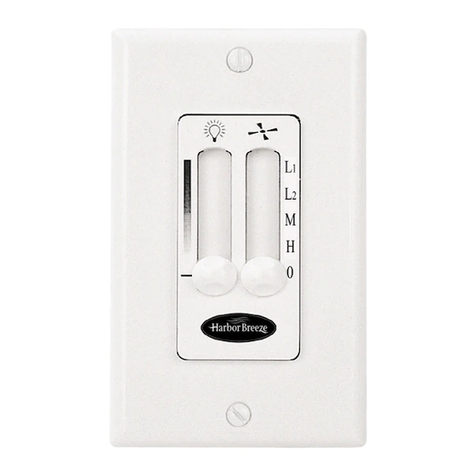
Harbor Breeze
Harbor Breeze RC103L Quick reference guide
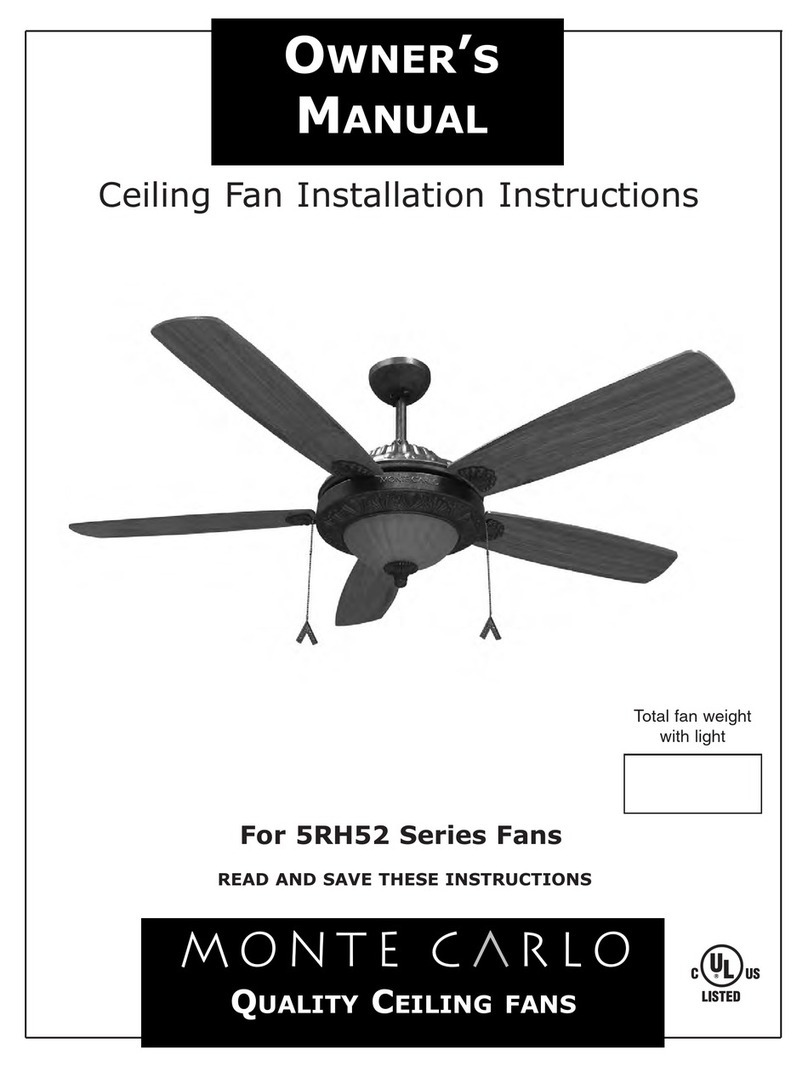
Monte Carlo Fan Company
Monte Carlo Fan Company 5RH52 Series owner's manual

Domo
Domo DO8149 Instruction booklet
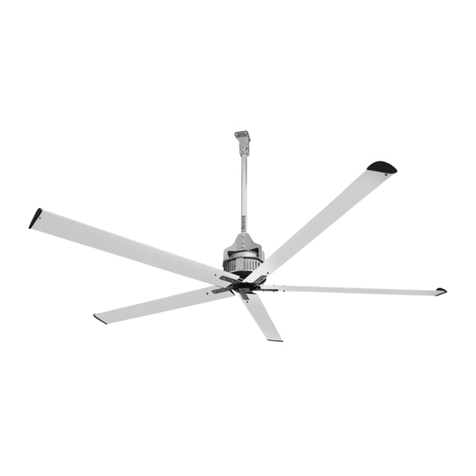
Vortice
Vortice Nordik HVSL Super Blade Instruction booklet
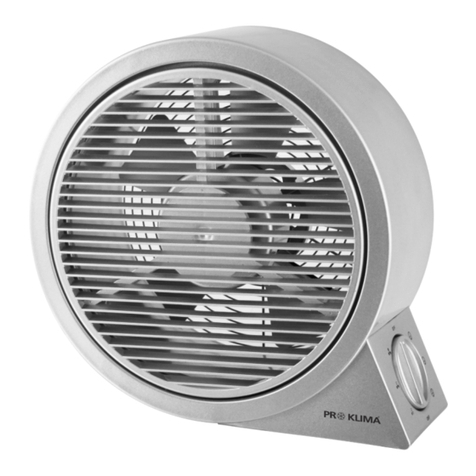
ProKlima
ProKlima FN-108451.2 instruction manual
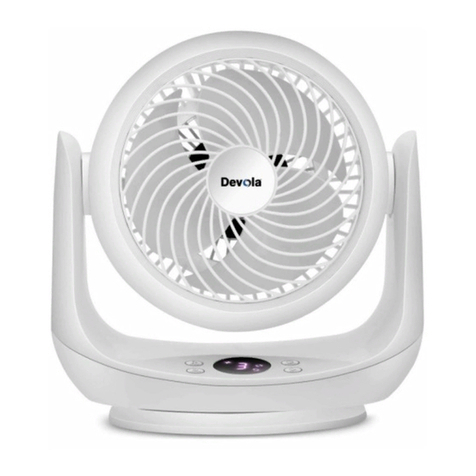
DEVOLA
DEVOLA DVF7DCFAN user manual
